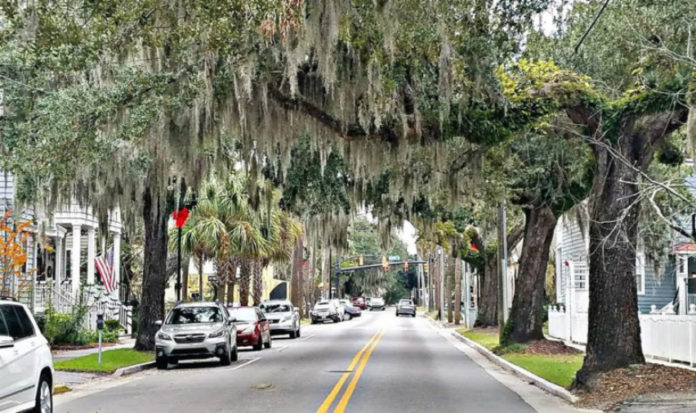The entire Beaufort area is synonymous with both American and southern history, and a large part of that history is contained in downtown Beaufort. Over 300 acres of the downtown part of the city is listed on the National Register of Historic Places, and that says quite a lot. But, aside from Bay Street, the amount of history contained within a short 8 blocks of Craven Street is something to behold. Craven Street is Beaufort’s ‘avenue of history’.
The quintessential southern street, in the 1800s plantation owners chose Craven Street as the prime location to build their summer homes due to the fact that the intra-coastal breeze flows through even on the hottest summer day.
Let’s take a look at several of the important historic spots located within the 8 blocks that make up Craven Street.
The Castle
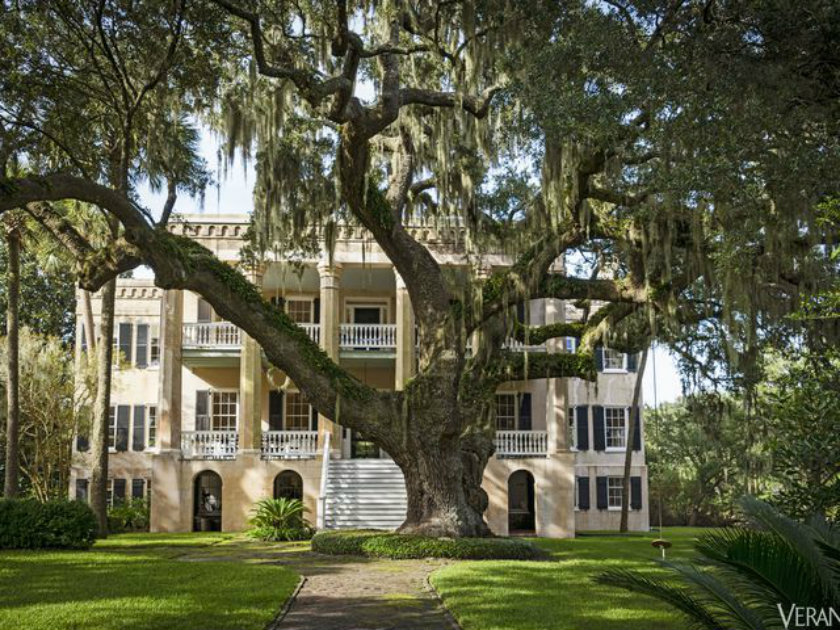
One of Beaufort’s most well-known and celebrated old homes is The Castle, also known as the Joseph Johnson House at 411 Craven Street in downtown’s Point Neighborhood. Used as a military hospital by Union Troops in before construction on the home was 100 percent completed, the magnificent house was built in the late 1850s by Dr. Joseph Johnson and sits today as one of our most photographed historic spots.
The Johnson family moved into the house in 1861 and Beaufort quickly fell to Union forces later that same year. During the rest of the Civil War, the house was used as a hospital and an outbuilding behind it was used as a morgue, and also the hiding place for some of Johnson’s valuables. Anticipating occupation by Yankee forces, Johnson buried the family silver and china beneath the floor of the outbuilding. After the war, he paid $2000 in back taxes to reclaim his house during the Direct Tax Sales that followed all across the south.
The Beaufort Arsenal

The 222 year old Beaufort Arsenal building resembles a big old fort right in the heart of Beaufort at 713 Craven Street, even if its yellow lime wash color seems oddly out of place in a city street known for stately white houses and oak lined thoroughfares.
The Beaufort Arsenal was designed by Colonel Thomas Tailbird and was built in 1798 to house the Beaufort Volunteer Artillery, whose members were a collection of prominent local names, in the years following its fighting along with the Continental Army during the American Revolution from 1775 through 1783.
Today, the Arsenal is the home of the Beaufort History Museum and a visitor center for tourists who come to Beaufort in droves and it’s also used for parties, events and Civil War encampments and reenactments. It plays a big role in Craven Street being the avenue of Beaufort’s history.
Gravesite of Robert Smalls
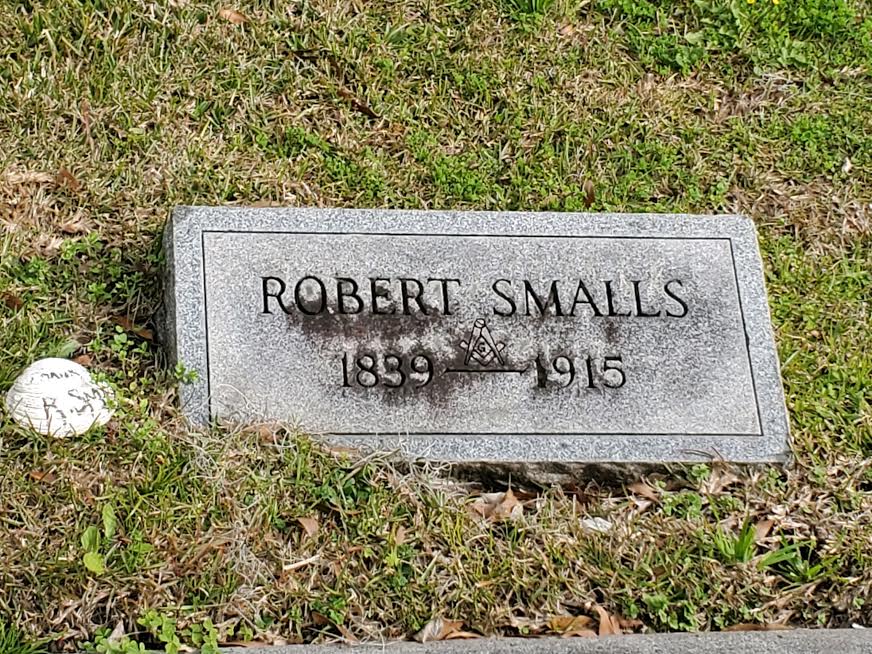
Few life stories tell as well as the life story of Robert Smalls. One of Beaufort’s most revered sons in history, the courage shown by Smalls during his life is the stuff of legend and has inspired so many. Born a slave in 1839 and rented out to work in Charleston, Smalls gained fame at the outset of the Civil War for his bravery in commandeering a steamship named The Planter and maneuvering it through Charleston harbor with 16 slaves on board, past Confederate ships, and surrendering it to Union forces.
After the Civil War he returned home to Beaufort and was then elected to 5 terms as a Congressman in the U.S. House of Representatives. He also purchased his former (slave) owner’s house and took care of his former master’s widow until she died.
Smalls died on February 22, 1915 and his funeral was said to have been the largest in the history of Beaufort. He’s buried in the yard at the Tabernacle Baptist Church, 907 Craven Street. The same courtyard also contains a monument to his heroic life.
Tabernacle Baptist Church

Tabernacle Baptist Church at 907 Craven Street is historic in several ways. It was formed by African-American members of Beaufort Baptist Church after Federal Occupation of the town in 1861. It was a stop along the way for Harriet Tubman in the Underground Railroad and is the final resting place of Beaufort’s Robert Smalls.
The cemetery also contains graves of Bythewood family (the earliest dating to 1817) suggesting an early-19th century burial ground occupies the site. A memorial to Robert Smalls is also located in the cemetery where Smalls is buried along with his first and second wives, and his mother.
A Harriet Tubman Monument is being erected near Smalls’ grave in the church’s courtyard. Tubman was a Civil War heroine who served in various capacities in Beaufort from 1862 through early 1865. Some historians believe the freed slaves from Tubman’s famous slave-freeing raid on the Combahee River had assembled at Tabernacle after the raid.
Secession House

One of the finest and most notable homes on Craven Street is the Maxcy-Rhett House also referred to as the Secession House. Located at 1113 Craven Street, the home was originally built by Milton Maxcy as a school for boys in 1810 on top of the foundation of another house that was built in 1740. In the 1840’s Edmund Rhett, the brother of U.S. Senator Robert Barnwell Rhett, purchased the house. The first meeting in favor of secession from the Union took place in the Milton Maxcy house. During the Civil War, the home served many purposes including an officers’ quarters, a hospital and as a Pay Master’s Station for Union Troops.
An inscription on the basement wall reads, “In this house the first meeting of Secession was held in South Carolina.” The Secession House also plays a big role in Craven Street being the avenue of Beaufort’s history.
Reconstruction Era National Monument

January of 2017, President Barack Obama established the Reconstruction Era National Monument in Beaufort to recognize, commemorate and promulgate the impact of the Reconstruction Era, which took place from 1861 to 1876.
Beaufort was chosen largely because of the Port Royal Experiment, a first step toward Reconstruction. After the Civil War, the United States grappled with the question of how to integrate millions of newly freed African Americans into social, political, economic and labor systems. The people, places, and events in Beaufort reflect on the most important issues of this tumultuous time period.
The visitor center at 706 Craven Street houses an exhibit that provides a general overview. Additional sites are found at the Penn Center, Camp Saxon and within the historic district. See more at www.nationalparks.org/explore-parks/reconstruction-era-national-monument
The Thomas Rhett House
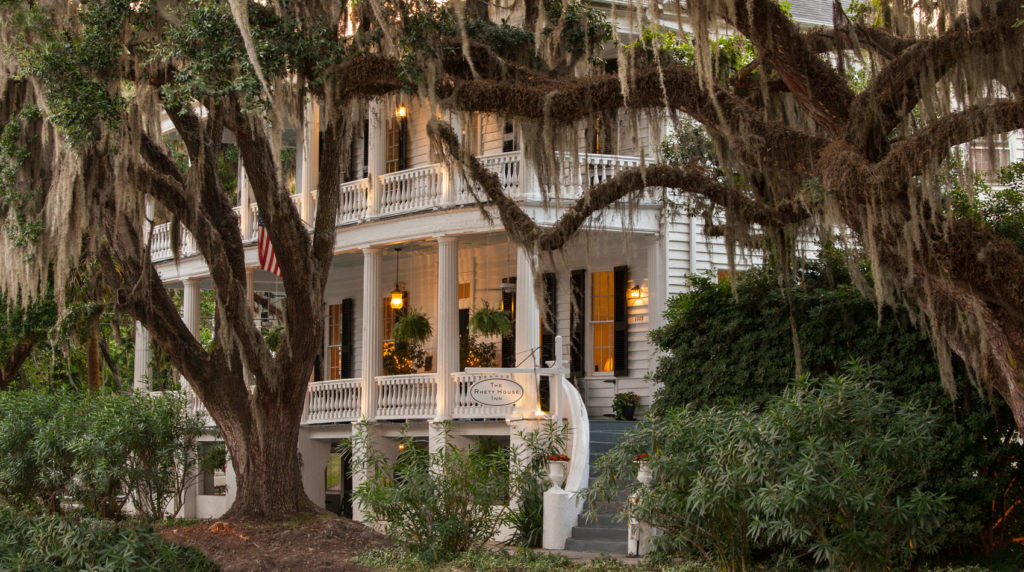
The Thomas Rhett house was built in 1820 by Thomas Smith Rhett, a prosperous planter, and his wife Caroline Barnwell (one of the Lowcountry’s most prominent families) Rhett. During the Civil War, the house at 1009 Craven Street served as a hospital recovery building.
Rhett is a familiar name to most Americans, and all of the Rhetts in the South Carolina Lowcountry, from Beaufort to Charleston, were related in some way. The Rhett family built several important structures in Beaufort; the Thomas Rhett House (The Rhett House Inn) and the Maxcy-Rhett House (“The Secession House”); and also in Charleston.
Legend says that Margaret Mitchell, author of “Gone With the Wind”, named her character Rhett Butler by combining the names of the prominent Rhetts (of Beaufort and Charleston) and Butlers (of Atlanta).
Today, it’s a bed & breakfast aptly named The Rhett House Inn and it plays a big role in Craven Street being the avenue of Beaufort’s history.
‘The Rectory’, William Fickling House
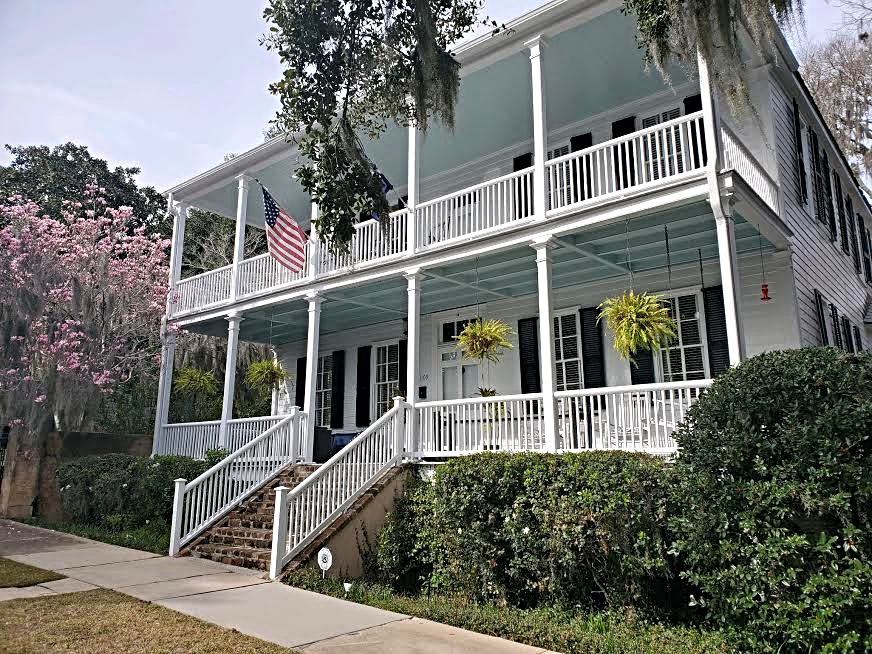
‘The Rectory’ at 1109 Craven Street was built by William Fickling, who taught at a boys’ school in Beaufort. This two-story clapboard house with Adam-style interior is now the Rectory of St. Helena Episcopal Church. The grounds extend through to North Street and give a view across the lawn of the beautiful south gate of the church. The original house was only one room deep. The rear portion, including a bay window on the east, was added after the Civil War.
The earliest known record of the house is 1807, when Mrs. Fickling sold the property after her husband’s death. Construction of the house is thought to be during 1820s or later with much rebuilding before and after Civil War.
Here’s a map of Craven Street so you can take a tour of your own and go back in time.
See lots more about the historic spots in downtown and all around Beaufort SC.



